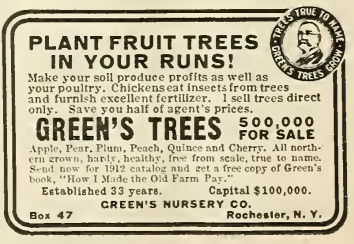How and what did they feed chickens in the old days?
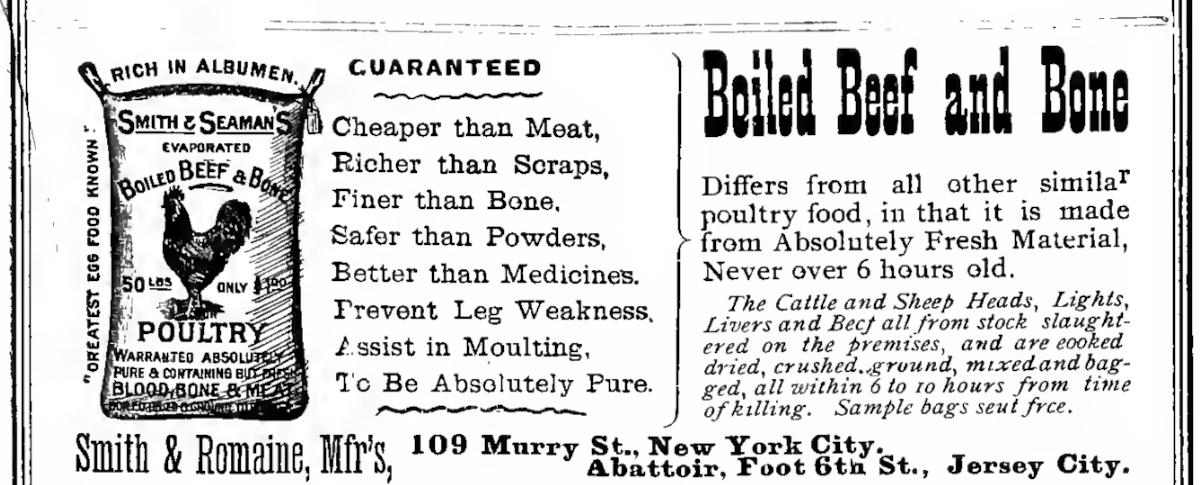
Chickens will eat anything they can get into their gullet. In the wild they will forage for seeds, greens, insects and if the opportunity arises small rodents, lizards and snakes.
Table of Contents
Historically chickens were fed twice a day, firstly in the morning just after sunrise and then again about an hour before roosting time. They were expected to forage for themselves in between.
Bagged feeds have been around for centuries, grains have been stored, transported and sold in cloths sacks since the Neolithic period (8,000 - 3,000 B.C.), the real difference in modern poultry feeds is the amount of processing, testing and supplementation which happens during production.
"Ideal meal" was the first ready mixed poultry food and went on sale in 1869.
Below: William cook, a poultry breeder and creator of the Orpington chicken was also an animal feeds merchant and his "Ideal Meal" bagged chicken feed was on sale from 1869 for 21 shillings per hundredweight.
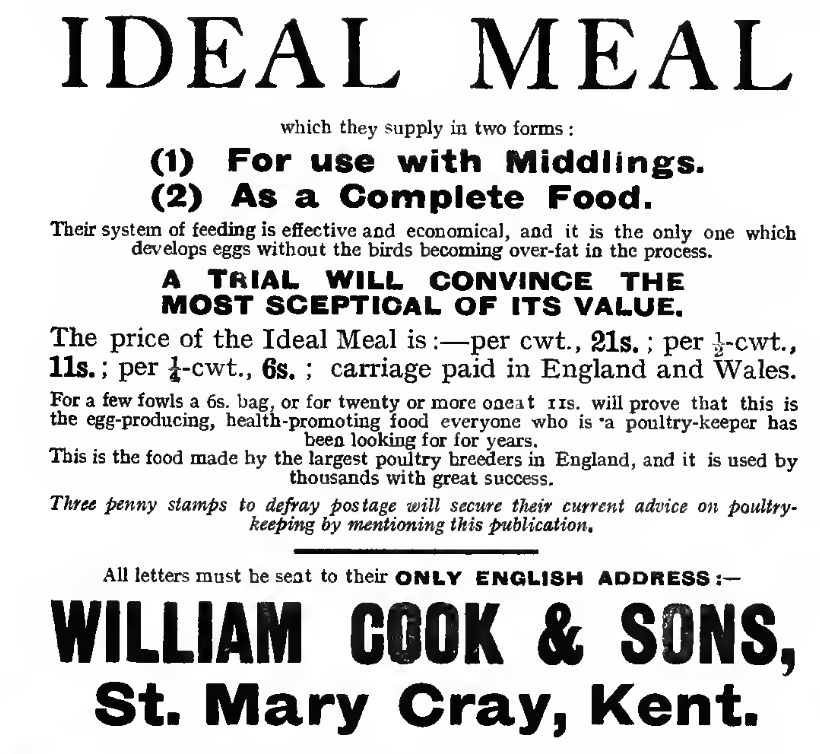
Most modern commercial feeds and pellets are mixed to contain the full spectrum of nutrients required by chickens so what did chicken keepers do to feed their chickens in the old days?
Below: Wheat was considered by olden day poultry keepers to be one of the best food for chickens.
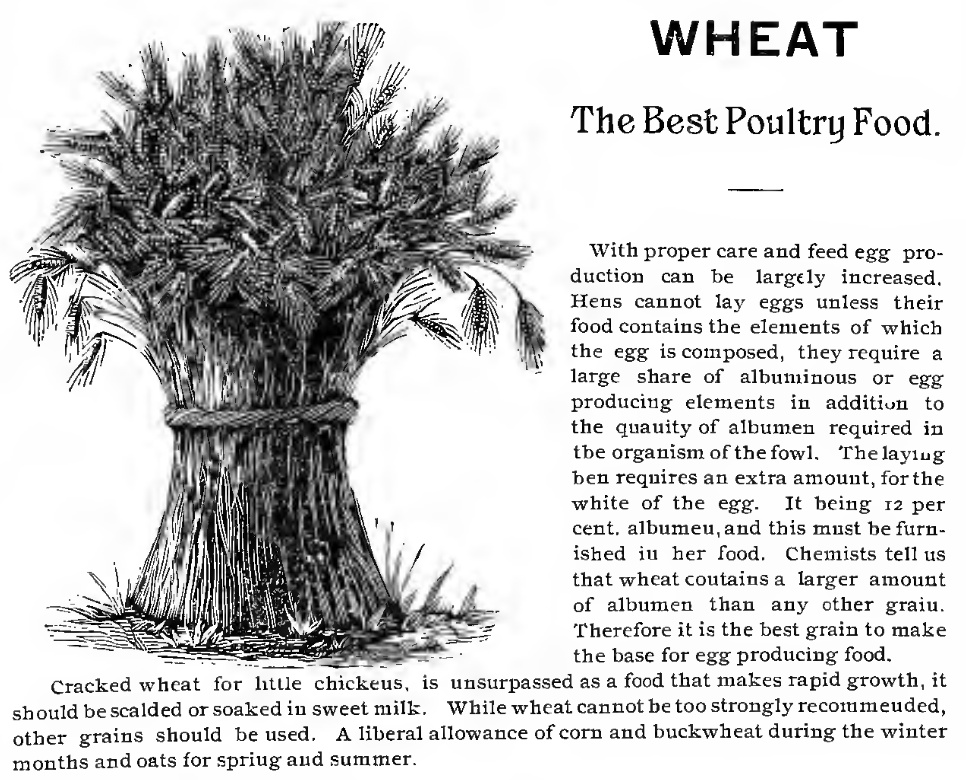
We know bagged feed made specially for chickens was available to purchase in 1917 as Rev T.W Sturges notes in his book "Poultry culture for profit" that "Biscuit Meals, made by many poultry supply firms are also excellent chicken feed."
Below: Modern pelleted feeds have only been around since the 1930's but bagged chicken feeds have been available for hundreds of years. This advert for bagged poultry feed is from 1921.

In the United kingdom pelleted animal feeds became available in the the early 1930's. These early chickens feed did not have the nutrition of modern day pellets feeds and did not store as well.
What did they feed chickens in the 1800's and before?
In the olden days chickens and other poultry were fed a mixture of seasonally available grains like wheat, pulses like dried peas, dried meat meal, cut green bone, root vegetables, food scraps and anything they could find for themselves in between.
Chickens have always been fed on the the most readily available and cheapest foodstuffs.
Below: A list of poultry feeds the Rev T.W Sturges lists as being suitable for chickens in his book "Poultry culture for profit" from 1917. He called proteins albumenoids at the time.
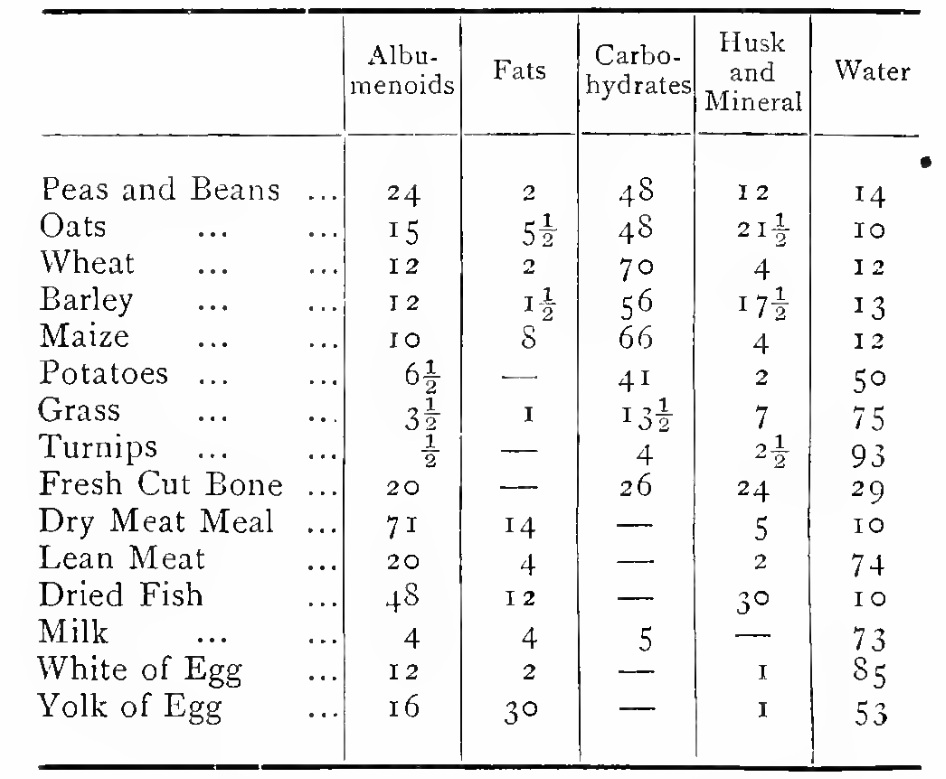
He goes on to list the feeds he gave to his chickens as well as the limitations of some of these feed-stuffs:
- Peas and beans are richest in protein but the food is too concentrated for poultry, except when given as meal in small quantities.
- Oats form an almost perfect food. There is nothing like it for adding size and stamina to growing stock.
- Maize is too rich in fatty matter to be fed alone, but when used alternately with oats is a first class food.
- Grass, it will be noticed, is almost a perfect food, as 7 parts out of 50 of solid matter is protein.
- Barley is very hard to digest. It is one of the worst foods for fowls. Barley Meal when finely ground is a good food when mixed with other meals.
- Sharps, Pollards, or Thirds, are various names given to the refuse from wheat after the bran has been taken off when grinding for fine flour.
- Dry Meat Meal can be bought in various forms at from 12 to 20 Shillings per cwt. (hundredweight), and is one of the most convenient of all forms for adding the required proportion of proteins.
- Green or Fresh Cut Bone is another, and is keenly relished both by growing stock and laying hens.
- Fish Meal, the product of dried fish, ground up bones and flesh together, is also rich in proteins.
- Biscuit Meals, made by many poultry supply firms, is a good if expensive feed for chickens. Biscuit meal is a cooked, concentrated feed using human food byproducts like used distillers grain or oil extraction leftovers.
His words have been edited for clarity.
When grains were fed to chickens they had to be prepared, either by rolling them to split them open of with a hand cranked kibbling machine.
Below: Poultry men often had machinery like this grain kibbler for preparing their own poultry feed.
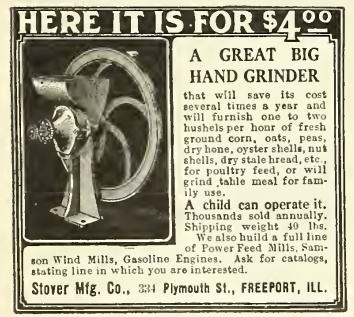
In the UK it was more common before 1800 to keep ducks and geese than it was chickens.
Timeline of chicken feed development:
Date given are when I have first references to products.
- Before 1840 chickens were fed almost anything they would eat.
- Beef scrap was the premium source of protein for poultry from the 1840's
- The mill roller was invented in 1866 allowing the bulk and speedy milling of grains.
- "Ideal Meal" Poultry food went on sale in 1869.
- Special chick feed blends appeared in 1911.
- Pelleted feeds appear in the 1930's.
- First medicated poultry feeds appear in 1951.
- First organic chicken feeds appear in 1968.
Below: Beef scrap was rendered and pressed to remove the fat and water and then dried and flaked.
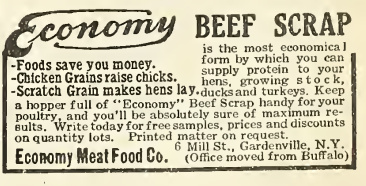
What did they give chickens instead of grit and shell in the old days?
Most chickens were kept free range in the old days and there was little requirement for grit, the chickens found it for themselves.
Below: A hand cranked bone cutter for making bone shavings for chickens.
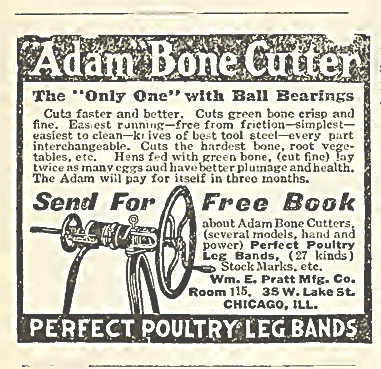
Instead of oyster shell, chickens were fed flaked green bone or mineral supplements. The fresh uncooked or green bones were fed into a machine that reduced them into small flakes which were then dried.
Below: Pearl grit was crushed limestone grit for feeding to chickens.
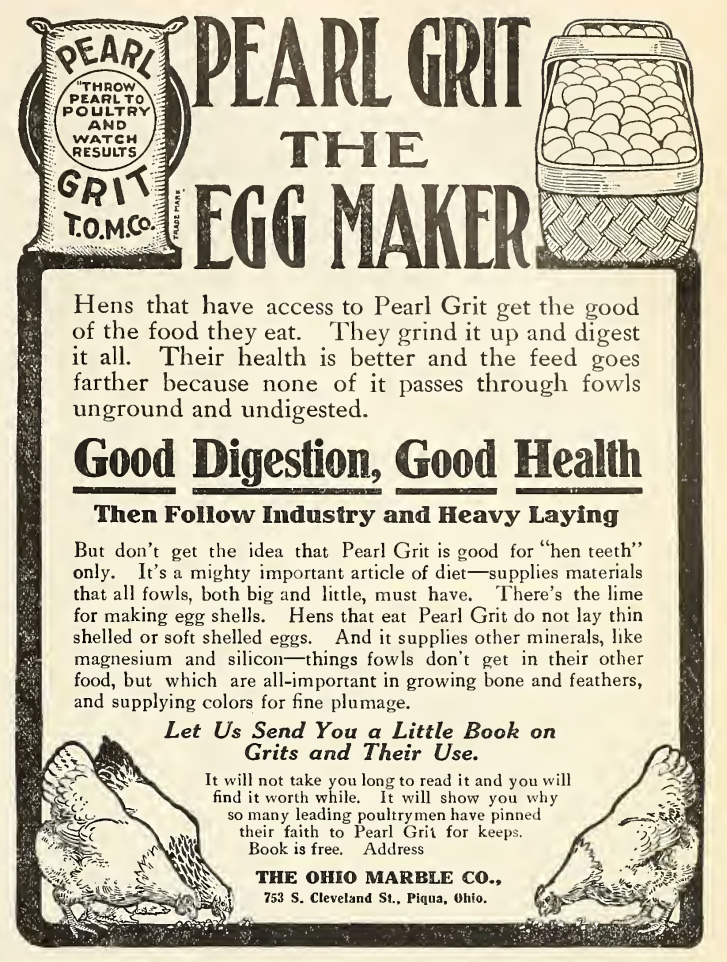
What did they feed baby chicks and growers in the old days?
For many years up until 1800, chickens were farm animals that looked after themselves and almost no supplemental feeding was given.
Baby chickens were fed the same thing as older birds except occasionally given some cooked whole egg.
The hobby of showing chickens changed how birds were raised and keepers began to take the feeding seriously.
Below: An advert for dry chick feed from 1911.

A balanced diet for chickens in the 1900's was considered to be 10 lb of wheat, 3 lb of oats, 2 lb of bran and 1 lb of beef scraps.
Below: a balanced ration for chickens in the 1900's.
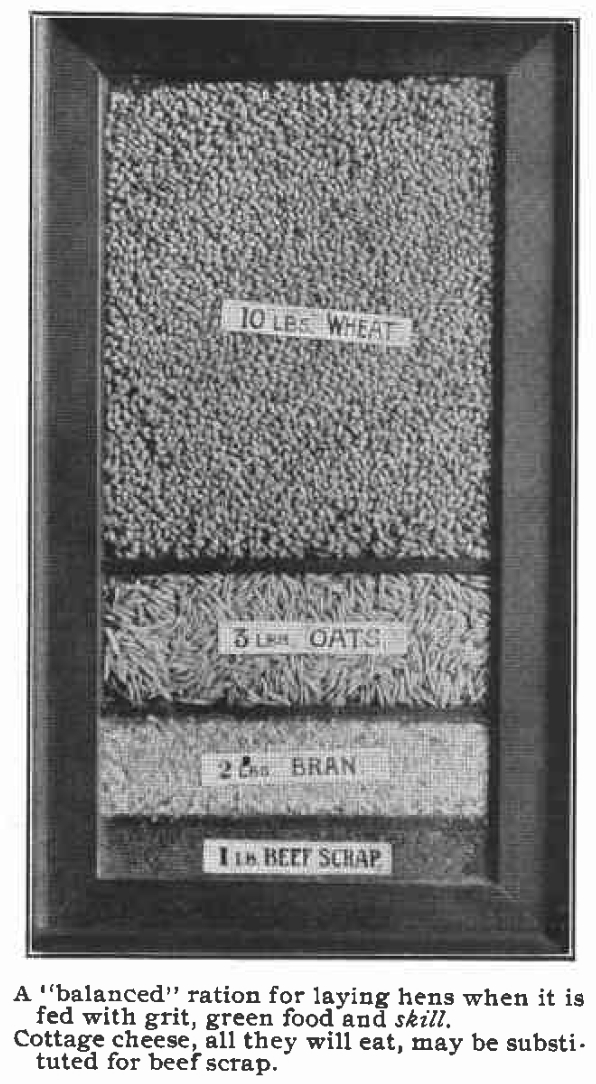
The grains would have just been chopped finer for younger birds.
It was common for poultry keepers to cultivate worms and have brush piles to attract insects.
Green foods and vegetables:
Greens have always been a mainstay of poultry keeping and grains have been sprouted for chickens since the 1890's. Alfalfa, cabbages and clover have been cultivated to help feed chickens and modern pellets contain dried grass or alfalfa meal.
Root vegetables were a farming staple in the old days and turnips, beet and mangel wurzels were fed to all farm animals when in season as well as being made into silage for winter.
Below: Feeding chickens root vegetables.

Chickens were often kept in orchards to take advantage of windfall and other fruit.
Below: This advert from March 1912 encourages chicken keepers to plant trees in their chicken runs.
